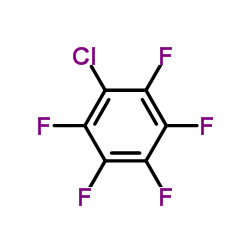Effects of a 13-week chloropentafluorobenzene inhalation exposure of Fischer 344 rats and B6C3F1 mice.
E R Kinkead, S K Bunger, E C Kimmel, C D Flemming, H G Wall, J H Grabau
Index: Toxicol. Ind. Health 7(4) , 309-18, (1991)
Full Text: HTML
Abstract
Chloropentafluorobenzene (CPFB) has been identified as a candidate simulant for nonpersistent chemical warfare agents. Acute toxicity studies have shown that CPFB has limited adverse effects on laboratory animals. A 21-day inhalation study of rats and mice to 2.5, 0.8, and 0.25 mg CPFB/liter resulted in reduced weight gain in male and female rats exposed at the high concentration only and identified the liver as a potential target organ. This multiconcentration inhalation study was designed to detect a no-observable-effect level associated with repeated exposure to CPFB. Male and female rats and mice were exposed to 250, 50, or 10 mg CPFB/m3 (0.25, 0.05, or 0.01 mg CPFB/liter) for 13 weeks. No treatment-related effects on body weight, clinical chemistries, mortality, absolute or relative organ weight or histopathology were noted.
Related Compounds
| Structure | Name/CAS No. | Molecular Formula | Articles |
|---|---|---|---|
 |
1-Chloro-2,3,4,5,6-pentafluorobenzene
CAS:344-07-0 |
C6ClF5 |
|
Gas chromatography with parallel hard and soft ionization ma...
2015-01-15 [Rapid Commun. Mass Spectrom. 29(1) , 91-9, (2014)] |
|
Oxidative dehalogenation of perhalogenated benzenes by cytoc...
2007-05-22 [Biochemistry 46(20) , 5924-40, (2007)] |
|
Catalytic and Noncatalytic Ammonolysis of Chloropentafluorob...
[Russ. J. Org. Chem. 37(3) , 404-9, (2001)] |
|
Synthesis of 1, 2 difluoro-1, 2-bis (pentafluorophenyl) dich...
[J. Fluor. Chem. 24(4) , 413-18, (1984)] |
|
5-Chloro-1-(difluorochloro)-2, 3, 4, 5, 6, 6-hexafluoro-1, 3...
[J. Fluor. Chem. 23(5) , 479, (1983)] |